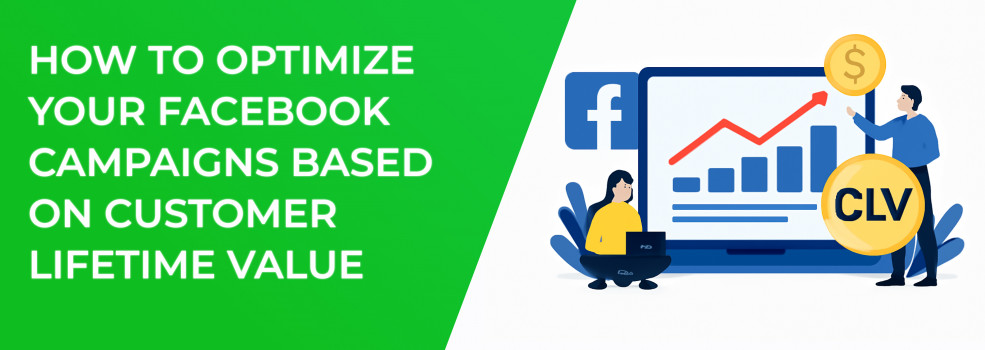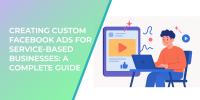As digital advertising continues to grow in importance, businesses are constantly looking for innovative ways to maximize their ROI. One of the most effective methods is to optimize Facebook campaigns based on Customer Lifetime Value (CLV). This powerful metric helps businesses predict the total value a customer will bring over their entire relationship with the brand. In this article, we will explore how to leverage CLV to supercharge your Facebook ads.
Understanding Customer Lifetime Value (CLV)
Customer Lifetime Value is a key metric for understanding how valuable a customer is over an extended period, rather than just a single purchase. When you understand CLV, you can tailor your Facebook ads to focus on acquiring and nurturing high-value customers rather than simply chasing clicks or impressions. This shift in focus can lead to more efficient Facebook ad optimization and a higher return on ad spend (ROAS).
By focusing on CLV, you shift from short-term transactional goals (like a one-time sale) to long-term customer engagement. Instead of just spending money on ads that bring in any customer, you focus on the ones who will continue to return, make repeat purchases, and even refer others. This helps maximize both the immediate and long-term value of your Facebook campaigns.
Understanding CLV helps prioritize long-term relationships over one-time sales. High-value customers are key to maximizing ROI in Facebook campaigns.
To effectively define which customers provide the most value, you must first learn how to define a target audience properly. This step-by-step guide, How to Define a Target Audience for Marketing, offers valuable insights.
Why CLV Matters for Facebook Ad Campaigns
Facebook's platform offers powerful tools for targeting and refining your audience. However, without considering CLV, businesses may waste money targeting low-value customers who might only make a single purchase. By factoring CLV into your Facebook ad performance strategy, you can ensure that you're investing in campaigns that deliver long-term value, not just short-term results.
When CLV is a central focus of your campaigns, it changes the way you interact with your audience. Rather than optimizing for metrics like just click-through rate (CTR) or ad impressions, you now aim for those who will be the most valuable over time. This shift not only makes your ads more efficient but also improves your overall Facebook ad strategy.
Here are a few ways that CLV can transform your Facebook campaigns:
-
Targeting High-Value Customers
One of the primary advantages of incorporating CLV into your Facebook ads is that you can focus your targeting efforts on high-value customers. Facebook offers tools like Custom Audiences and Lookalike Audiences to help you target users who share similar behaviors or characteristics with your most valuable customers. By using these tools, you can ensure that your ad spend is directed toward individuals who are more likely to bring in higher CLV, rather than simply opting for the lowest-cost conversions.
Effective targeting is critical to maximizing your CLV in Facebook ads. If you want to learn more about reaching the right audience, this guide on Facebook Ad Targeting 101 is a great resource. -
Optimizing Campaign Budgets Based on CLV
Once you've identified high-value customers, you can allocate your ad budget more effectively. Instead of spreading your budget evenly across various ad sets, Campaign Budget Optimization (CBO) allows you to automatically shift funds towards the ads and audiences that drive the most valuable results. With the advantage campaign budget feature, Facebook can help you spend smarter by ensuring your budget is allocated to high-performing ads that bring long-term returns.
Choosing the right campaign objective plays a major role in how well your ads perform. For a deeper understanding of selecting the appropriate objective, check out Meta Ad Campaign Objectives Explained: How to Choose the Right One. -
Long-Term Retargeting Strategies
Retargeting is an essential part of Facebook advertising, but when you incorporate CLV into your strategy, you can improve its effectiveness. Rather than retargeting all website visitors, create custom audiences that specifically include those with higher potential lifetime value. By focusing on these customers, you can create tailored messaging that nurtures them into becoming repeat buyers, further boosting their CLV and increasing the cost per click (CPC) efficiency in your campaigns.
Sometimes, when Facebook campaigns are running inefficiently, you may see the 'Ad Set May Get Zero' warning. This could be a sign that your ads are underperforming. To resolve this, check out this article on Why You See 'Ad Set May Get Zero' on Facebook and How to Fix It for some actionable insights.
How to Integrate CLV into Your Facebook Ads Strategy
To truly optimize your Facebook campaigns based on customer lifetime value, you need to integrate CLV at every stage of your ad strategy. It's not just about measuring CLV once and setting it aside. It's about building it into your Facebook ad processes to improve targeting, budgets, and ad creatives.
-
Set Up Facebook Pixel
To start, you’ll need to implement Facebook Pixel on your website. This powerful tool tracks the actions visitors take on your site, such as purchasing or signing up for a newsletter. Facebook Pixel will help you collect data on customer behaviors, which is vital for measuring CLV. It also enables you to retarget users who are more likely to bring in high-value long-term returns. -
Measure the Right Metrics
Metrics like click-through rate (CTR) and cost per click (CPC) are great for understanding how well an ad is performing, but they don’t provide the full picture when it comes to CLV. Instead, focus on metrics that are directly tied to CLV, such as conversion rate and ROAS (return on ad spend). By tracking these metrics, you can determine how well your ads are driving long-term, repeat business. -
Use Facebook's Automated Optimization Features
Facebook’s automated ad delivery optimization can help you reach the customers most likely to complete valuable actions. With automatic optimization, Facebook will prioritize showing your ads to those users who are most likely to contribute positively to your CLV. This not only increases the relevance of your ads but also enhances the overall effectiveness of your Facebook ad campaign. -
Segmentation and Custom Audiences
Another critical step is segmenting your audience. Use Facebook's segmentation tools to identify users who are most likely to have high CLV. For instance, you can create Custom Audiences for customers who have made multiple purchases or engaged with your content frequently. Facebook’s targeting capabilities allow you to customize your approach to reach the users that matter most to your business.
Measuring the right metrics, like ROAS and conversion rate, is essential for optimizing Facebook campaigns based on CLV.
If your Facebook ads are not converting as expected, it’s essential to analyze and fix any underlying issues. Our article on Facebook Ads Not Converting: How To Fix It provides actionable solutions.
Key Facebook Ad Optimization Tactics for CLV
While focusing on CLV is crucial, it’s important to also employ specific tactics to fine-tune your Facebook ad campaigns. By combining your understanding of CLV with Facebook ad optimization strategies, you’ll be able to boost your results further.
-
Refine Your Ad Creatives: Your ad creatives should reflect the needs and interests of high-value customers. Ensure that your messaging focuses on the benefits your product or service can provide over the long term, not just immediate gains. Customizing your visuals and copy to reflect CLV will resonate better with potential high-value customers.
-
Leverage Facebook Analytics: Facebook Analytics is a powerful tool for evaluating the performance of your campaigns. Use it to track which customer segments are driving the most value over time. This allows you to continuously adjust your targeting and budget allocation to ensure you're focusing on high-CLV customers.
-
Continuous Testing and Learning: To continually improve your Facebook ad performance, make testing a habit. Test various ad formats, targeting options, and creatives. This will help you identify the most effective strategies for attracting high-CLV customers and optimizing your ad impressions.
While CTR and CPC are important, they don’t give a complete picture of your Facebook ad success. To learn how to analyze Facebook ad performance beyond these metrics, check out How to Analyze Facebook Ad Performance Beyond CTR and CPC.
Conclusion
By focusing on Customer Lifetime Value, businesses can optimize their Facebook campaigns for more than just immediate sales. CLV helps you build long-term relationships with customers who will continue to generate revenue for your brand over time. With a combination of effective targeting, smart budget allocation, and continuous optimization, your Facebook ads can work harder for you.
Whether you're looking to reduce CPC or improve ROAS, integrating CLV into your Facebook ad strategy ensures that you not only generate quick returns but also build a sustainable and profitable customer base. With the right tools and approach, optimizing your Facebook campaigns based on CLV can significantly enhance your ad performance and drive lasting business success.

